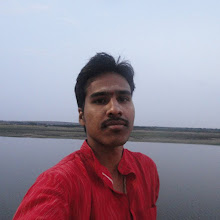US IT Recruiter
Eligibility : CS, BSc, BHM, Diploma, B.Pharm, B.Com
Location : Hyderabad
Last Date : 09 Jul 2015
Hiring Process : Face to Face Interview
Post/Position: US IT Recruiter - US Staffing
Location: Malakpet
Duration: Full time – Night Shifts
Salary: Training for 3months with 8K + P.F+ESI after 3 months With 10k +P.F +ESI Applicable.
Working days: Monday to Friday
Job Responsibilities:
Responsible for sourcing, screening and submitting suitable profiles to our client needs after completion of your training period
Qualifications:
Very good communication.
Aggressive.
Never give up Attitude.
Please note :
Candidate has to sign the agreement for 2 years with 2 Guarantors.
Address:
No. 16-11-20/7/A2 to 5, 2nd Floor, Chinna Balappa Complex, Saleem Nagar, Malakpet, Hyderabad, Telangana 500036
040 4240 6084
Eligibility : CS, BSc, BHM, Diploma, B.Pharm, B.Com
Location : Hyderabad
Last Date : 09 Jul 2015
Hiring Process : Face to Face Interview
Post/Position: US IT Recruiter - US Staffing
Location: Malakpet
Duration: Full time – Night Shifts
Salary: Training for 3months with 8K + P.F+ESI after 3 months With 10k +P.F +ESI Applicable.
Working days: Monday to Friday
Job Responsibilities:
Responsible for sourcing, screening and submitting suitable profiles to our client needs after completion of your training period
Qualifications:
Very good communication.
Aggressive.
Never give up Attitude.
Please note :
Candidate has to sign the agreement for 2 years with 2 Guarantors.
Address:
No. 16-11-20/7/A2 to 5, 2nd Floor, Chinna Balappa Complex, Saleem Nagar, Malakpet, Hyderabad, Telangana 500036
040 4240 6084








































